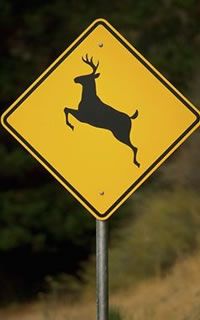Canada Road Travel
Canada Travel by Road
Road travel in Canada is a great way to explore the country in every season. There are highways, secondary roads, ice roads and gravel roads.
 Highways
Highways
The main paved highway in Canada connecting east to west is the Trans Canada Highway (Hwy #1). In many cases it is the fastest way to get from A to B. Throughout the country there are many smaller, secondary highways which connect to and from the Trans Canada Highway. The speed limit on the Trans Canada varies, in most cases, from 80 to 110 kilometres an hour. Within city limits the speed limit drops to 30 to 60 kilometres an hour.
- wearing a seatbelt is the law when traveling on Canadian roads.
- there are heavy fines for littering on Canadian highways.
- always drive with your lights on.
- pull over at pull outs and let cars pass when a line up cars are behind you.
- there are rest stops located along the major highways in Canada.
- always pay attention to signs on the highway.
- only pass on dotted yellow lanes or while in designated passing lanes.
- slower vehicles always travel in the right lane.
- must stop when school bus lights are flashing and children are crossing the street.
- pull over for emergency vehicles.
Secondary Roads
In almost every region of Canada there are the main travel routes (Trans Canada Highway) and then there are sightseeing routes. The secondary roads are usually two lanes wide, the speed limit is slower, there is less traffic, more pot holes and cracks in the pavement therefore a bit rougher and definitely narrower. But most importantly the secondary roads often provide some of the best scenery with allot less stress. Secondary roads are for those travelers who are not in a big hurry.
Gravel Roads
Gravel roads lead to some of the more remote wilderness destinations, attractions and communities in Canada. In many regions the backcountry regions are home to a vast network of gravel roads leading to rivers, lakes and mountain tops. There are gravel roads which, at one time, use to be designated forestry and mining roads. Some of those same roads today are deactivated and are now considered recreational roads. Some, however, are still active roads seeing heavy usage by logging and mining vehicles.
- always drive with your headlights on.
- pull over or slow down for large logging and mining trucks
- follow 250 metres behind a vehicle to avoid flying rocks
- watch for wildlife
- do not litter
- do not leave your vehicle unattended on backcountry roads (vandalism)
- always wear your seatbelt.
- always have a spare tire
Ice Roads
Ice roads in Canada are seasonal roads located in the northern regions of the country during the winter season. Ice roads form once the temperatures drop and freezing occurs. They form on frozen lakes, rivers and oceans. Ice roads provide road access to remote communities in the winter season which, during the summer, are accessed from the air only. Northern ferry routes are, often, replaced by ice roads in the winter months. The majority of ice roads are located in the Northwest Territory, Yukon Territory, Northern Ontario and Nunavut regions of Canada.
- speed limit hovers around 25 kilometres an hour (excessive speed causes cracks in ice).
- surface is very slippery. Good tires required.
- there are no services or emergency stops on ice roads.
- always drive with headlights on.
- roads are shared with snowmobiles.
- wear your seatbelt.
- beware of large trucks.
- always travel with emergency blankets, a flashlight, water, warm clothes and food.
- always have a good spare tire.
- always let someone know where you are going and your projected arrival time when traveling ice roads.
- top up your window washer fluid.
- fill your tank of gas.
When you subscribe to the blog, we will send you an e-mail when there are new updates on the site so you wouldn't miss them.
Comments